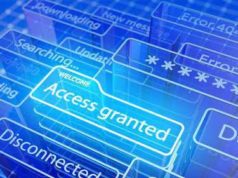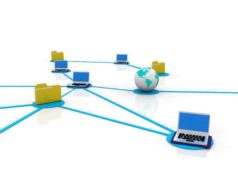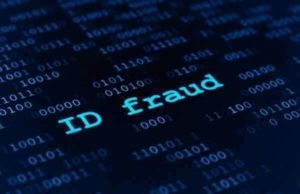
What is Computer Identity Theft?
Identity Theft resulting from Computer Fraud is a classification of criminal activity that entails the proliferation of fraudulent activity taking place through the facilitation of electronic, online, computational, or Internet-based settings. In certain cases, identity theft undertaken through the implementation of electronic systems has been classified as ‘Wire Fraud’, which results from the visible wiring and circuitry present in electronics. Regardless of its presence within a virtual setting, computer-based identity theft operations typically mirror the vast expanse of methodologies.
What is Electronic Identity Theft?
Electronic Identity Theft is defined criminal act of fraudulently obtaining the personal information belonging to another individual within the realm of a computer or electronic setting. Typically, upon unlawfully obtaining this type of electronic data, the individual facilitating electronic identity theft will undergo the process of assuming the identity of the victim; this theft of identity takes place without the expressed consent of the victim.
In many cases, an individual committing identity theft will utilize deceptive means – within an electronic or computational setting – in order to gain access to the personal and private information belonging to another individual; this process may be achieved through a variety of methods involving electronic data theft.
How Does Electronic Data and Identity Theft Take Place?
The illegal possession of information, data, or records belonging to another individual or entity through the illicit use of a computer, which may undertake methods involving the disbursement of unsecured and fraudulent programs or documentation not only with the intent defraud, but also to unethically obtain personal and private information in its electronic form.
Electronic identity Theft may include Spamming, Phishing, and the installation of Spyware. Subsequent to the facilitation of this method of intrusive and illegal entry into electronic databases housing personal records, the individual committing identity theft will typically pose as that individual, unlawfully acting in that person’s place in order to achieve economic gain through a variety of means.
Electronic Data Theft Profile: Phishing
The criminal activity known as Phishing is classified as a variety of fraud that exists within a digital, virtual, or computational setting. Phishing is the unlawful, unethical, and illegal methodology facilitated by individuals with the intention of soliciting private, personal, and privileged information from individuals unfamiliar, unsuspecting, or unaware of the Phishing operation taking place.
Phishing is facilitated as both a communicative and online crime in which individuals – colloquially known as ‘Phishers’ – will employ deceptive, fraudulent, and misrepresentative means of electronic communication. These types of communication will be unlawfully dispersed throughout the communicative channels existing within the vast realm of Internet to a multitude of email addresses.
How Does Phishing Identity Theft Work?
Phishing Communications can emulate forms used by recognizable companies, as well as communications unlawfully sent from a hijacked email account belonging to friend or acquaintance of the victim. Typically, these communications will engage victims to transmit classified details – which can include personal and financial information – back to the facilitator of this type of identity theft operation. A successful Phishing operation results in the attainment of personal and private information that can be used for illegal economic gain or exploitative measures:
Email-based Phishing Fraudulent Solicitation: Fraudulent email addresses emulating those of reputable companies and business will be created within a Phishing Scam in order to solicit financial or account information.
Email-based Phishing Exploitative Pleas: Oftentimes, these emails will convey a message stating a dire or emergency situation in which the ‘assistance’ of the victim is required in lieu of negative recourse; these types of electronic identity theft methodologies are undertaken by preying upon the compassion latent within their victims – once personal or private information is attained, the perpetrators may engage in identity theft upon fraudulently utilizing the unlawfully-acquired information.
Phishing is a criminal act of fraud involves the illegal and unlawful attempt of to attain restricted, unauthorized, and privileged information through means of fraudulent, communicative requests.
Phishing Explained: Recognizing and Defending Against Online Deception
Phishing is a widespread cyber threat that continues to deceive countless individuals and organizations. This article aims to provide a comprehensive explanation of phishing, its various forms, the techniques employed by cybercriminals, and practical steps to defend against it.
1. Understanding Phishing
Phishing is a form of cyber-attack in which cybercriminals use deceptive tactics to trick individuals into revealing sensitive information, such as usernames, passwords, credit card details, or personal data. The term “phishing” is a play on the word “fishing,” as attackers use bait to lure victims into their traps.
2. Forms of Phishing
Phishing takes on multiple forms, each with its own set of tactics:
a. Email Phishing: Attackers send fraudulent emails impersonating reputable entities, aiming to trick recipients into clicking on malicious links or providing personal information.
b. Spear Phishing: This is a targeted form of phishing where cybercriminals customize their messages to deceive specific individuals or organizations.
c. Vishing (Voice Phishing): Attackers use phone calls to deceive victims, often posing as legitimate entities to extract sensitive information.
d. Smishing (SMS Phishing): In smishing attacks, criminals send fraudulent text messages to mobile users, encouraging them to click on malicious links or reply with sensitive information.
e. Pharming: In pharming attacks, cybercriminals manipulate DNS (Domain Name System) settings to redirect victims to fraudulent websites, even when they type in legitimate web addresses.
3. Phishing Techniques
Phishers employ a variety of techniques to lure victims:
a. Impersonation: Cybercriminals impersonate reputable organizations, often using convincing logos, branding, and email addresses to deceive recipients.
b. Urgency and Fear: Phishing emails often create a sense of urgency or fear, pressuring recipients to act quickly without thinking.
c. Social Engineering: Phishers manipulate human psychology, exploiting trust, curiosity, and the desire to help others.
d. Malware Delivery: Some phishing emails contain attachments or links that, when clicked, deliver malware to the victim’s device.
e. Spoofed URLs: Attackers use misleading or altered URLs to make fake websites appear as legitimate ones.
4. Identifying Phishing Attempts
Recognizing phishing attempts is crucial in defending against them:
a. Check the Sender: Examine the sender’s email address for discrepancies or unusual domains.
b. Verify Requests: Be skeptical of emails or messages requesting sensitive information, even if they claim to be from reputable sources.
c. Look for Spelling and Grammar Errors: Phishing emails often contain spelling and grammar mistakes.
d. Inspect URLs: Hover your mouse over links to preview the destination URL before clicking.
e. Double-Check Email Content: Be wary of emails that create a sense of urgency or fear.
5. Defending Against Phishing
Protecting yourself from phishing attacks requires a combination of technology and vigilance:
a. Use Antivirus Software: Install and regularly update reputable antivirus and anti-malware software.
b. Enable Multi-Factor Authentication (MFA): MFA adds an extra layer of security, making it harder for attackers to gain unauthorized access.
c. Educate Yourself and Others: Understand phishing techniques and share knowledge within your organization or with family and friends.
d. Report Suspected Phishing: If you encounter a phishing attempt, report it to the relevant authorities or your organization’s IT department.
e. Stay Informed: Keep up to date with the latest phishing trends and security best practices.
Conclusion
Phishing is a persistent and evolving threat that can have serious consequences for individuals and organizations. By understanding its various forms, techniques, and how to identify phishing attempts, individuals can take proactive steps to defend against these deceptive cyberattacks. Vigilance, education, and robust cybersecurity measures are key to staying one step ahead of cybercriminals in an increasingly digital world.





























